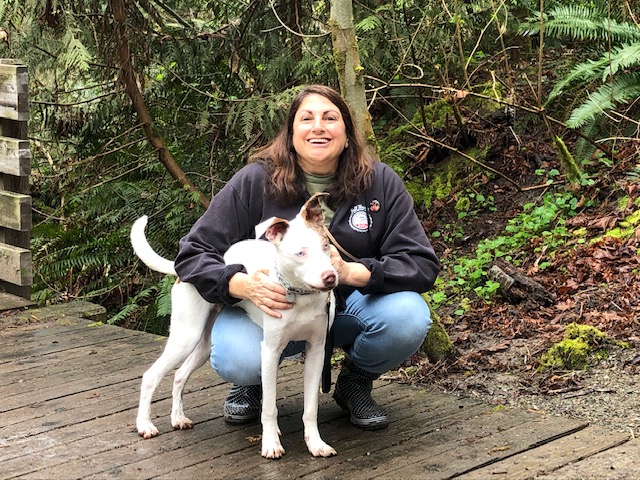
Way back in 1998 one of my very first clients, a young Amie bought her first house in Georgetown for $122.000; those were the days! Over the years she refinanced and bought an investment property in Tacoma. She then moved out of her Georgetown place almost three years ago as she was able to buy a nicer house in southeast Seattle and she rented her Georgetown home which brought in a good income. For a self-employed woman who does not make a huge amount of money, she was very smart to accrue some investment properties.
We have been in touch over the years and big-hearted Amie even adopted a dog we rescued from a bad situation. Several times we have discussed the possibility of her selling her first house, however she was somewhat attached as she had done a lot of work on it. However, she did not want to have to pay the huge capital gains tax that she would have to pay as an investment property, so her time to sell was coming up. She’d had to sell by June of 2020, as by then she would not have lived in the house for two of the last five years, which is the time limit.
She had also been dealing with really difficult tenants, so when their lease was up at the end of August 2019, she decided to get the house listed. The renters had left the house in a mess, so a bunch of yard work and clean up needed to happen. By early October we were ready to get the house on the market.
Like most folks, Amie wanted to get the most money possible. Her property was zoned L1, which meant ‘low rise multi-family’ so several townhouses/row houses could be built on her lot. Her street had seen two other lots developed into townhouses. Her house was a bit funky, but had updated electricity and plumbing, and a newer bathroom, so was perfectly live-able as a single-family house. It just needed cosmetic updates, like paint, new carpet and some flooring. However, there seemed no point in spending money to fix up the house as the lot was just as valuable.
In order to attract builders and regular buyers, I listed the property in two categories; as vacant land and a single-family home. I enlisted a Windermere colleague who is an architect and he drew up a site plan to show how the lot could be used to build four townhouses, or a possible house/DADU behind the existing home. The more information you can provide a builder the better!
Amie did not need to close until the end of June, so listing it in October would be appealing to a builder as they like to have a long closing date, so that they can work on getting permits, etc. and not have all their money tied up immediately. They really like to have a year to close, but nine months would also be appealing.
The market had slowed a bit by the time we listed the house and it seemed a lot of developers already had their money tied up in existing projects. I had lots of open houses, but the feedback from most residential buyers was that the house needed too much work for them. So, we unfortunately had to drop the price in order to entice a buyer, and it worked!
We even got a back-up offer for more money! The first buyers, however, persisted; they were a small residential build company who planned to use the property as an office and then build down the road.
Amie was relieved to get the house sold; it closed in early March. I am so happy for her, as she really needed to not pay that huge capital gains tax.
Congratulations, Aimee!
 Facebook
Facebook
 X
X
 Pinterest
Pinterest
 Copy Link
Copy Link
